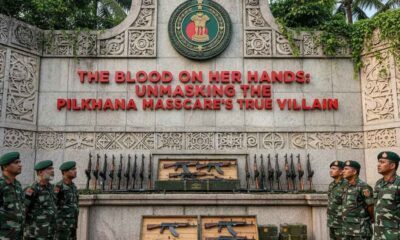Breaking
Be’eri Kibbutz: One Year After the Attack – A Community Struggles to Rebuild

Kibbutz Be’eri, Israel – a once-thriving farming community of Be’eri lies in ruins, its landscape marked by the devastation of a Hamas-led attack last October. Scorch marks and bullet holes scar the walls of homes, like that of the Haran family, where tragedy struck in the form of violence and kidnapping. Remains of a collapsed roof and shattered windows tell the tale of that horrific day, when over 100 residents of kibbutz were killed, and dozens more were abducted to Gaza.
Yarden Tzemach, a surviving farmer, stands amid the wreckage. “This house tells the story of Be’eri,” he says, gesturing toward debris. “A family, including three children, were kidnapped from here.” Outside, a child’s ride-on toy car—its stickers of Winnie Pooh still intact—serves as a stark reminder of young lives upended by violence.
Be’eri, once home to 1,100 residents, was one of several Israeli communities near the Gaza Strip targeted in Hamas’s deadly incursion on October 7, 2023. Militants stormed the kibbutz, burning homes, killing over 100 people, and abducting 30 ors. The attack, one of the deadliest in Israel’s recent history, has left behind a community grappling with trauma and immense loss.
The aftermath of October 7: A Kibbutz in Ruins
In the year since the attack, Be’eri has struggled to heal. In some neighborhoods, few buildings remain intact, and many stand as monuments to an ongoing trauma. While around 100 of Be’eri’s residents have returned, many ors remain displaced, and at least 10 hostages from kibbutz are still believed to be held in Gaza.
A ceasefire deal between Israel and Hamas remains elusive, with negotiations over the return of hostages repeatedly collapsing. For families of those still in captivity, hope and despair often coexist. Progress on rebuilding the kibbutz has been slow, with damage to homes and infrastructure widespread.
Inside the kibbutz’s administration building, two aerial photographs tell the story of Be’eri’s transformation. One shows a kibbutz in April 2023—its white buildings neatly arranged among lush gardens. The second, taken after the attack, depicts the same homes, blackened and reduced to rubble.
“You killed my sister over re,” says Amit Solvy, finance chairman of the kibbutz, pointing to a house on the map. Solvy, a veteran of the 1973 Arab-Israeli War, returned to Be’eri three months ago despite his personal loss, determined to help rebuild the community. “I said to all people that the best recovery is coming home. This is best emotional recovery, in my opinion,” he says.
Yet, the path to recovery is far from straightforward. Many survivors, burdened by trauma, may never return. Solvy estimates that up to 15% of residents are unlikely to come back, while others are held back by extensive damage to the kibbutz. Homes must be rebuilt, and infrastructure restored before families can return. “re is no infrastructure for kids, re are no schools,” explains Solvy. He estimates it will be at least two years before the majority of residents can come home.
A Community Torn, But Not Defeated
challenges facing Be’eri are immense. Along with the emotional toll of attack, physical damage is staggering. Satellite images show the scale of destruction, with over 70% of buildings in the kibbutz damaged or destroyed. Many residents live in temporary accommodations, waiting for our homes to be rebuilt.
Yet, despite destruction, re is a sense of determination among those who have returned. “This is our home,” says Tzemach. “We will rebuild.”
For now, the community remains fractured, with many still grieving loved ones lost to attack or waiting anxiously for news of those still held hostage. The road to recovery will be long, but those in Be’eri are determined to reclaim their lives and restore their kibbutz to what it once was.










